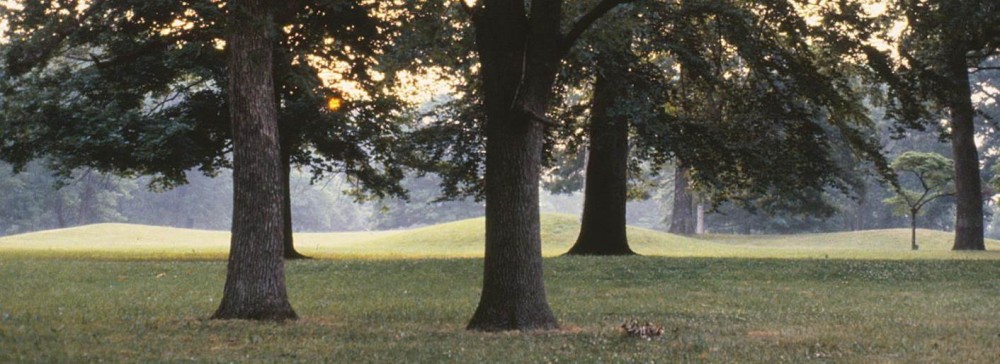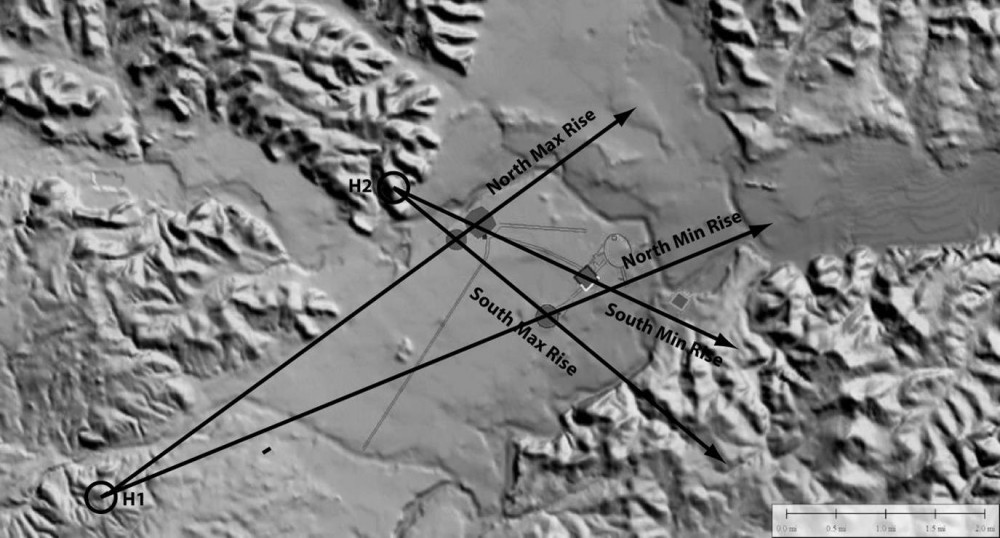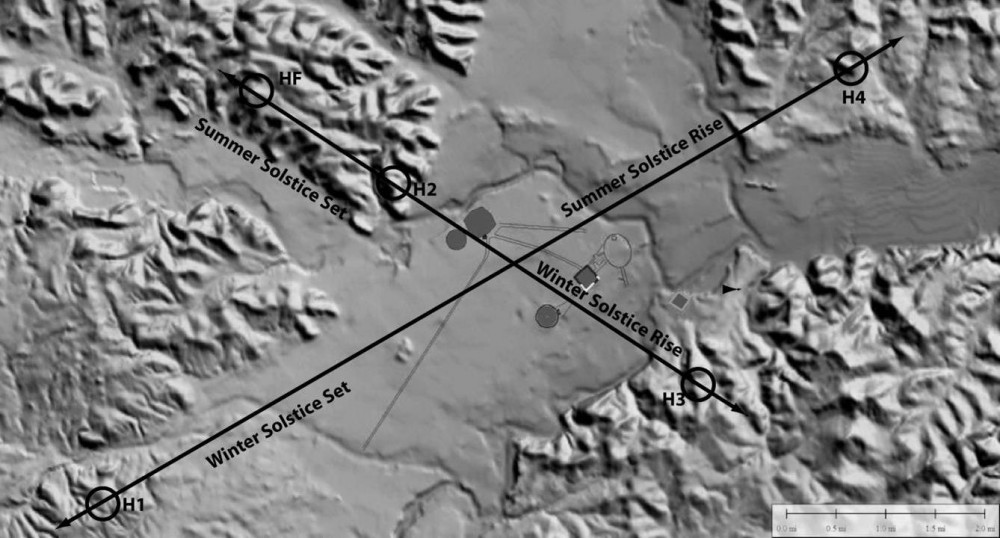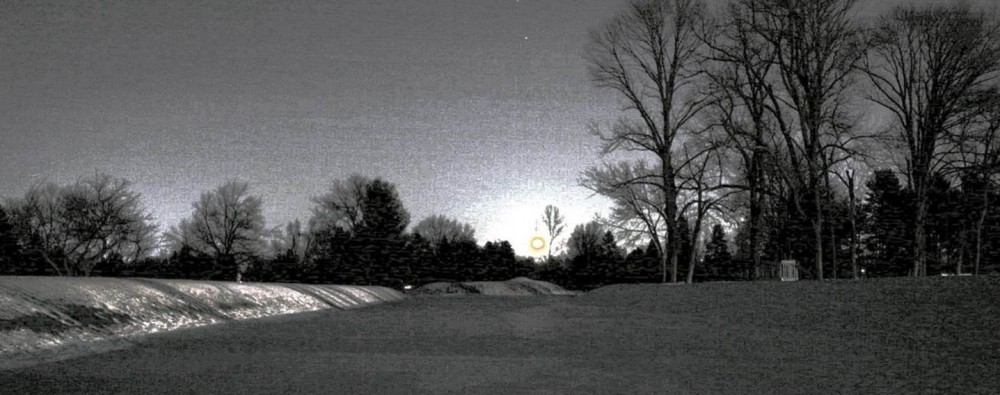Ray Hively and Robert Horn have changed the way we think about the Hopewell culture. Thanks in large measure to their careful and well-reasoned research most archaeologists have become convinced that the Hopewell constructed their monumental architecture in alignment to the cosmic rhythms of Moon and Sun. They presented their initial conclusions in 1982 in a relatively obscure journal at least obscure to most archaeologists. I didn’t read their paper until 1988 after becoming the curator of the Newark Earthworks for the Ohio Historical Society.
I was just over a year out of grad school having done my PhD research on the early Paleoindians, a culture about as far removed from the Hopewell as it is possible to be, but I had taken a graduate level course on the Hopewell culture, so I wasn’t entirely unprepared for the job I was undertaking. I don’t recall Newark being discussed much, if at all, in that course. And Hively and Horns paper wasn’t one of the assigned readings. Once I became the curator for the Newark Earthworks, I started reading everything I could find about Newark, which wasn’t all that much at the time. Eventually, I discovered Ray and Bob’s paper along with their follow-up analysis of High Bank Works. I found their argument that the Octagon Earthworks incorporated alignments to all eight of the key rise and set points of the Moon compelling. The fact that the only other octagonal enclosure built by the Hopewell also encoded those alignments into its design made the argument utterly convincing at least to me. So, why weren’t those papers required reading in my graduate seminar on Hopewell archaeology?

Sunrise on the summer solstice, June 20, 1988, from behind the Eagle Mound. The Sun is not rising in alignment with the Great Circle’s gateway, but is several degrees off to the north (left). As Bill Nye the Science Guy used to say, “one test is worth a thousand expert opinions.”
First of all, archaeologists have tended to be skeptical of archaeoastronomical claims and for good reason. A lot of archaeoastronomy is crap. As an example, I’ve seen the claim in a couple of sources that the gateway of Newark’s Great Circle was aligned to the summer solstice sunrise. But, when I actually stood behind Eagle Mound to watch the Sun rise on my first June 20th as curator of the site it was clear that the alignment wasn’t even close. Second, some archaeologists have a strong knee-jerk reaction against archaeoastronomical claims especially when they involve ancient North American societies. This can go beyond legitimate skepticism crossing the border into ethnocentrism or even outright racism. After I got to know Ray and Bob, they told me that when they shared their early work with a senior Ohio archaeologist he responded with the confident assertion that the Hopewell could not have aligned their earthworks to the complicated lunar cycle, because those people were savages.

Alignments from prominent hilltops H1 and H2 through the centers of major earthworks to the northern maximum moonrise (North Max Rise) and northern minimum moonrise (North Min Rise). Image courtesy of Robert Horn and Ray Hively.
In my December column for the Columbus Dispatch, I summarize Ray and Bob’s most recent conclusions regarding the archaeoastronomy of the Newark Earthworks. They now think that Hopewell sky-watchers used high hills to make their observations of the Sun and Moon. Once these ancient Ohioans had worked out the celestial cycles, they transferred the alignments to the earthworks they were building in the valley below. The descriptions of those alignments in my column might have been confusing to readers so, with Ray’s and Bob’s permission, I am posting a couple of their figures to make things clearer. In this case, a picture may be worth more than a thousand words. These new claims, with their extraordinary implications for the scale of Hopewellian sacred landscapes and the sophistication of their architectural designs, are certain to be regarded with skepticism by many archaeologists and that’s appropriate. Unfortunately, they also are likely to elicit from some archaeologists the same kind of self-assured dismissal the original claims received from that senior Ohio archaeologist, though the expressions of that dismissal may not be offered with the same honest crudity. In his remarkable book, A History of the Ancient Southwest, Stephen Lekson makes explicit the “unpleasant pedigrees” of this kind of historical and archaeological thinking about Native Americans: “I think parsimony [the assumption that the simplest explanation is perforce the best explanation], as applied archaeologically, too often has the unintended consequence of underestimating Native accomplishments and far more ominously keeping the Natives down.”

Alignments between prominent hilltops H1 & H4 and H2 & H3 showing their alignments to the sunrise and sunset on the summer and winter solstices. Image courtesy of Robert Horn and Ray Hively.
Lekson isn’t saying we should uncritically accept every outrageous claim made about American archaeology. Instead, he’s saying that it’s time “to shift the burden of proof from the current default that ancient Indians (until proven otherwise with lead-pipe certainty) were ignorant hicks who knew little or nothing beyond their front yards or at best their valleys.” In my column, I compare the magi of the Christmas story to Hopewell sky-watchers. That’s not just a cute holiday segue. Antoine Grignon, a fur trader of French and Ojibwe descent, referred to the 19th century Ojibwe chief Big Fire as a “noted astronomer” who “studied the heavens and was familiar with the principal groups of stars.” And Jean and Joyotpaul Chaudhuri reported that Muscogee Creek “stargazers, astronomers, or miccos [priests or ceremonial leaders] attempted to understand lunar eclipses.” Moreover, “these priests provided leadership in dealing with Creek astronomy and its social implications, including the timing and rituals involved in the pilgrimages to the mounds.” If Hively and Horn are even close to being right, then Ohio’s Hopewell societies must have had their own noted astronomers. And I’m convinced the Newark Earthworks drew pilgrims from the ends of the Hopewell world.

Moonrise on December 16, 2005 viewed from the entrance to the parallel-walled passageway leading into Newark’s Octagon. The Moon is rising at just about its northernmost point on the eastern horizon in almost perfect alignment with the axis of the earthwork. (The absolute northernmost rise of the Moon took place in September of 2006.) Photograph by Michael Mickelson.
Brad Lepper For further reading Hively, Ray and Robert Horn 1982 Geometry and astronomy in prehistoric Ohio. Journal for the History of Astronomy: Archaeoastronomy supplement 13(4):1-20. 1984 Hopewellian geometry and astronomy at High Bank. Journal for the History of Astronomy: Archaeoastronomy supplement 15(4):85-100. 2013 A new and extended case for lunar (and solar) astronomy at the Newark Earthworks. Midcontinental Journal of Archaeology 38(1):83-118.